Apple has finally achieved a long-held strategic goal with the iPhone 17 lineup: significantly reducing its manufacturing dependency on China. After years of careful planning and gradual shifts, the tech giant has reached a critical milestone in diversifying its supply chain across multiple countries, with India emerging as the primary alternative manufacturing hub. This strategic pivot represents one of the most significant operational changes in Apple’s recent history, driven by geopolitical tensions, tariff concerns, and the need for greater supply chain resilience.
Apple’s expanded manufacturing facility in Chennai, India, now produces iPhone 17 models for global distribution
Apple’s Strategic Manufacturing Shift Away from China
For the first time in Apple’s history, all four iPhone 17 models are being simultaneously produced in India from day one of the product launch. This marks a significant departure from previous releases, where Chinese factories had a weeks or months-long head start before production ramped up in other countries. According to industry analysts, this manufacturing milestone has been years in the making, with Apple gradually building the infrastructure and expertise needed in India to handle its premium product line.
The numbers tell a compelling story of this transition. As recently as 2021, approximately 99% of all iPhones were assembled in China. By last year, that figure had dropped to 81%, and with the iPhone 17 launch, industry experts project China’s share of iPhone production will fall below 70% for the first time, with a trajectory toward 50% by 2027.
“Apple is producing all four iPhone 17 models in India ahead of their debut, marking the first time that all new variations — including pro-level versions — will ship from the South Asian country from the get-go,” according to sources familiar with the company’s manufacturing strategy.
This manufacturing diversification has been enabled by significant investments in India, where Apple now operates five production facilities. The two newest plants, opened earlier this year, have provided the additional capacity needed to achieve simultaneous production with China.
Geopolitical Tensions and Tariffs Driving the Change
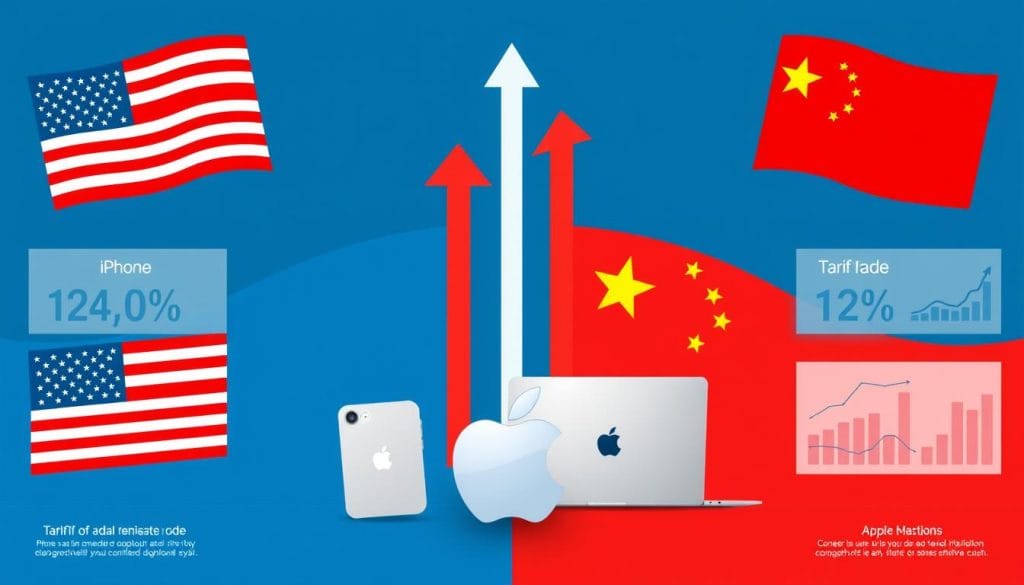
Apple’s push to reduce dependency on China hasn’t occurred in a vacuum. Geopolitical tensions between the United States and China have created significant business uncertainty, with tariffs emerging as a particular concern. The Trump administration’s aggressive trade policies, including potential 50% tariffs on Chinese imports, created strong incentives for Apple to accelerate its diversification plans.
While Apple initially faced the prospect of substantial tariffs on its India-manufactured products as well, the company secured an exemption after highlighting its investments in US manufacturing. This diplomatic victory underscores the complex interplay between corporate strategy and international relations that global companies like Apple must navigate.
Key Tariff Impact: Without exemptions, Apple could have faced tariffs adding $100-$150 to the retail price of each iPhone imported from China, potentially eroding profit margins or forcing price increases that could dampen consumer demand.
Beyond tariffs, the COVID-19 pandemic exposed the vulnerability of concentrated supply chains. When Chinese manufacturing facilities faced shutdowns during lockdowns, Apple experienced significant production delays and supply constraints. This real-world stress test accelerated plans already in motion to create more geographically distributed manufacturing capabilities.
Stay Updated on Global Tech Supply Chains
Receive our weekly newsletter covering the latest developments in tech manufacturing, supply chain innovations, and global trade policies affecting the technology sector.
India’s Emergence as Apple’s Secondary Manufacturing Hub
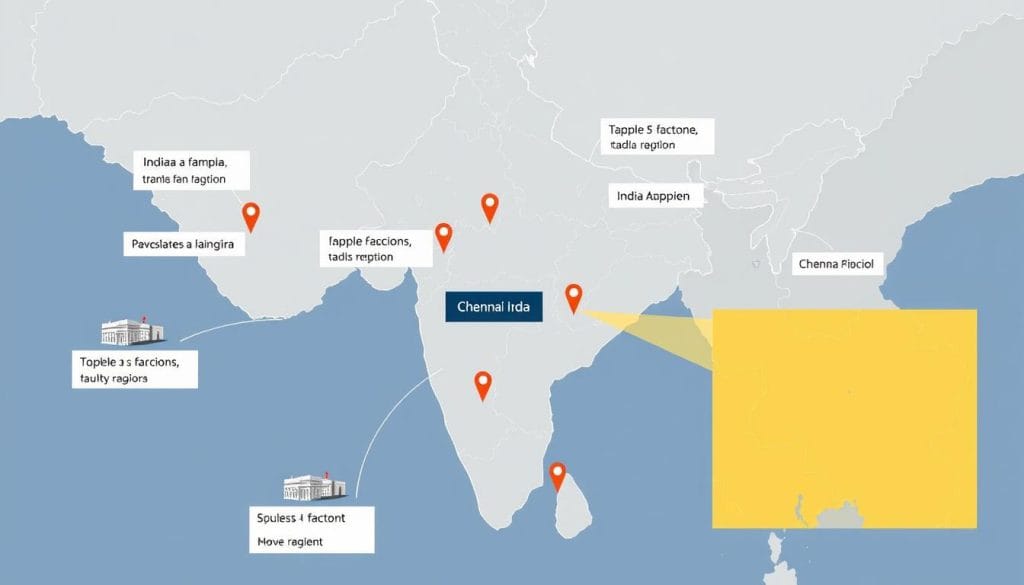
India has emerged as the clear winner in Apple’s manufacturing diversification strategy. The country now hosts five iPhone assembly plants, with the newest facilities equipped with state-of-the-art technology matching capabilities previously exclusive to Chinese factories. This expansion represents a significant vote of confidence in India’s manufacturing ecosystem.
The growth of Apple’s Indian manufacturing presence has been remarkably rapid. From producing only older iPhone models as recently as 2020, Indian facilities now handle the entire iPhone 17 lineup, including the premium Pro and Pro Max variants that require the most sophisticated manufacturing processes.
| Year | iPhone Models Produced in India | Production Volume (% of Global) | Facility Count |
| 2020 | iPhone SE, iPhone 11 | Less than 5% | 2 |
| 2022 | iPhone 13, iPhone 14 (delayed start) | 7% | 3 |
| 2024 | iPhone 16 (all models, slight delay) | 14% | 3 |
| 2025 | iPhone 17 (all models, simultaneous launch) | Projected 25-30% | 5 |
Apple’s manufacturing partners in India, including Foxconn and Tata, have invested heavily in workforce training and quality control systems. These investments have paid off, with Indian-manufactured iPhones now meeting Apple’s exacting quality standards for global distribution, including to premium markets like the United States and Europe.
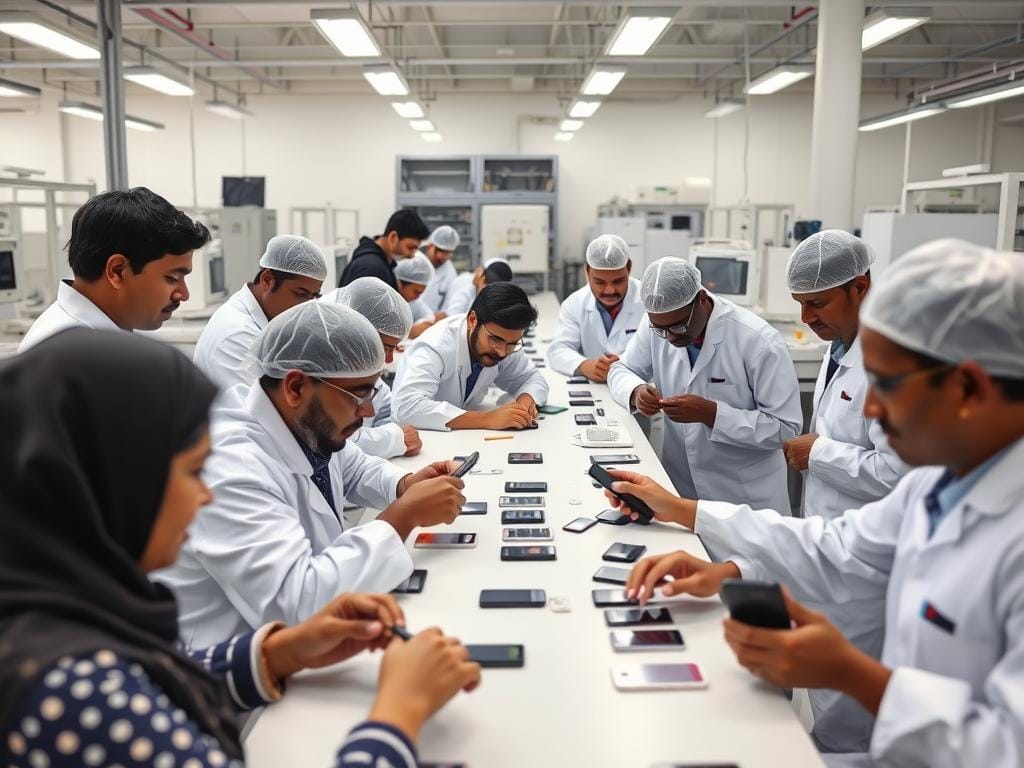
Challenges in Reducing Reliance on Chinese Manufacturing
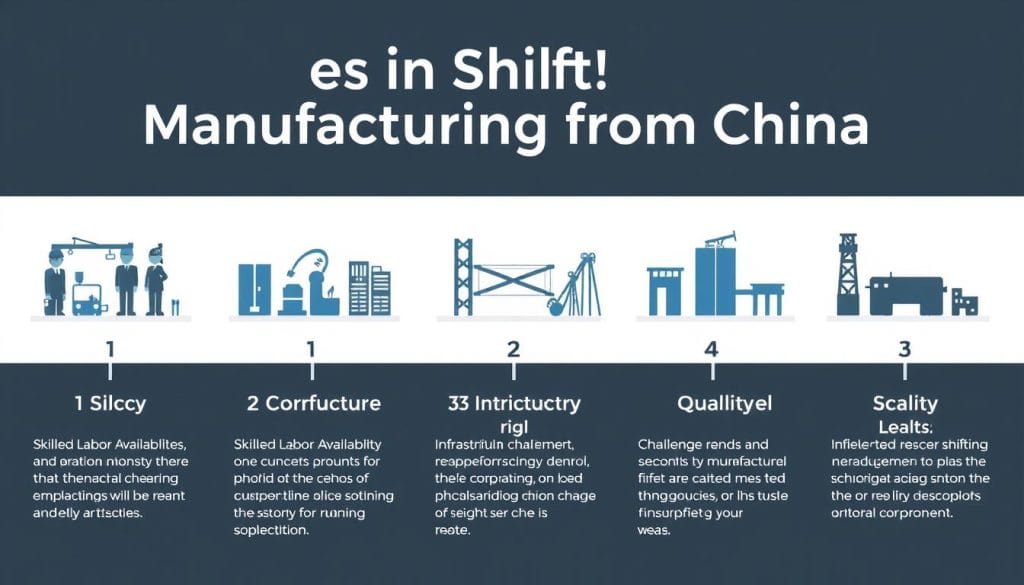
Despite the progress, Apple’s transition away from China faces significant challenges. China’s manufacturing ecosystem offers unparalleled advantages that are difficult to replicate elsewhere, including:
Infrastructure and Scale
China’s manufacturing infrastructure has been developed over decades, with specialized industrial zones, transportation networks, and utilities designed specifically for electronics production at massive scale. India and other countries are still developing comparable capabilities, particularly for the volume Apple requires during peak production periods.
Component Supply Chain
The proximity of component suppliers in China creates efficiencies that are challenging to replicate. While final assembly can move to India, many critical components still come from China, creating logistical complexities and potential delays.
Technical Expertise
China has developed a deep pool of engineering talent and manufacturing expertise specifically for consumer electronics. Building similar knowledge bases in new locations requires significant time and investment in training and education.
Production Flexibility
Chinese manufacturers are renowned for their ability to quickly scale production up or down and implement design changes rapidly. This flexibility has been crucial for Apple’s product launch strategy and is still being developed in alternative locations.
Expert Insight: “The biggest challenge isn’t just moving assembly but recreating the entire ecosystem of suppliers, skilled workers, and logistics that make China’s manufacturing machine so efficient. Apple is essentially trying to build a parallel universe of production capabilities,” notes supply chain analyst Ming-Chi Kuo.
Cost remains another significant consideration. While labor costs in India are lower than in China, the overall manufacturing cost can be higher due to infrastructure inefficiencies, import duties on components, and the learning curve associated with new facilities. Apple has been willing to absorb these costs in the short term to achieve greater supply chain resilience in the long run.
Beyond Assembly: Securing Critical Materials

Apple’s dependency reduction strategy extends beyond assembly to securing critical raw materials. In a significant move, the company recently entered a $500 million agreement with US-based MP Materials to secure a long-term supply of rare earth minerals essential for iPhone production.
This partnership includes plans to construct a dedicated facility in Texas for producing neodymium magnets specifically tailored for Apple’s products. These magnets are crucial components in iPhone speakers, haptic engines, and camera stabilization systems.
“Rare earths are essential for manufacturing advanced technologies. This collaboration will help strengthen the domestic supply chain of these critical materials,” stated Apple CEO Tim Cook regarding the MP Materials partnership.
The rare earth agreement represents another facet of Apple’s comprehensive strategy to reduce vulnerability to geopolitical tensions. China currently dominates global rare earth processing, controlling approximately 85% of the refined rare earth materials market. By investing in alternative supply sources, Apple is creating additional resilience against potential supply disruptions or trade restrictions.
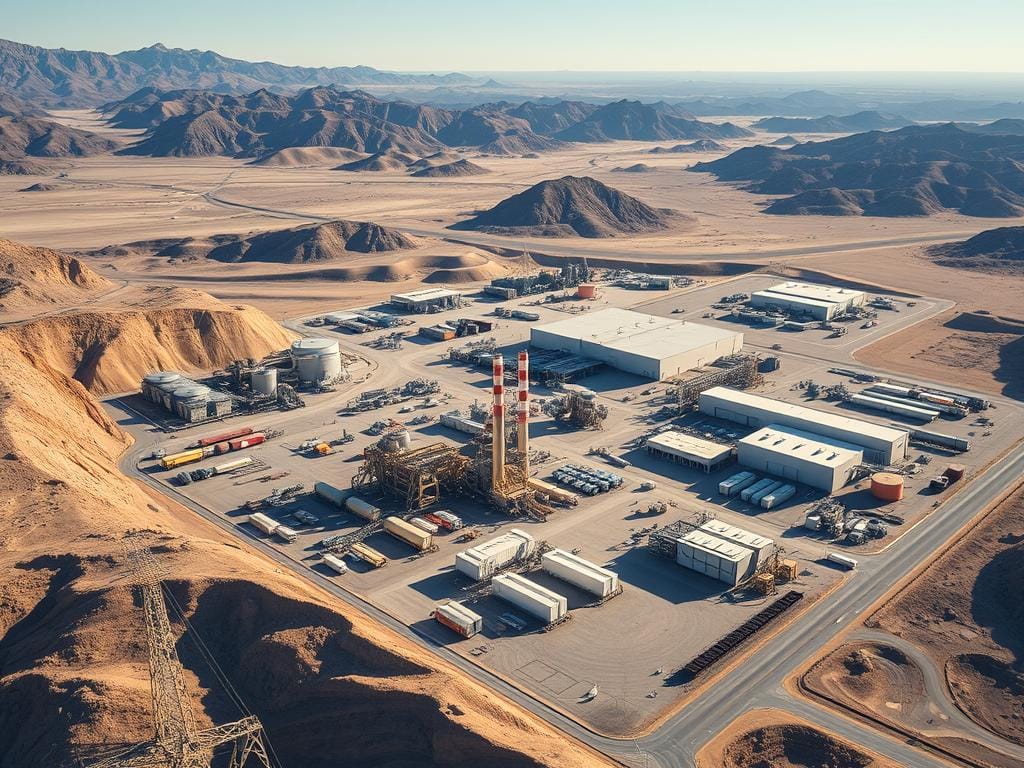
MP Materials’ Mountain Pass facility in California – the only active rare earth mine in the United States
Apple vs. Competitors: Supply Chain Diversification Strategies
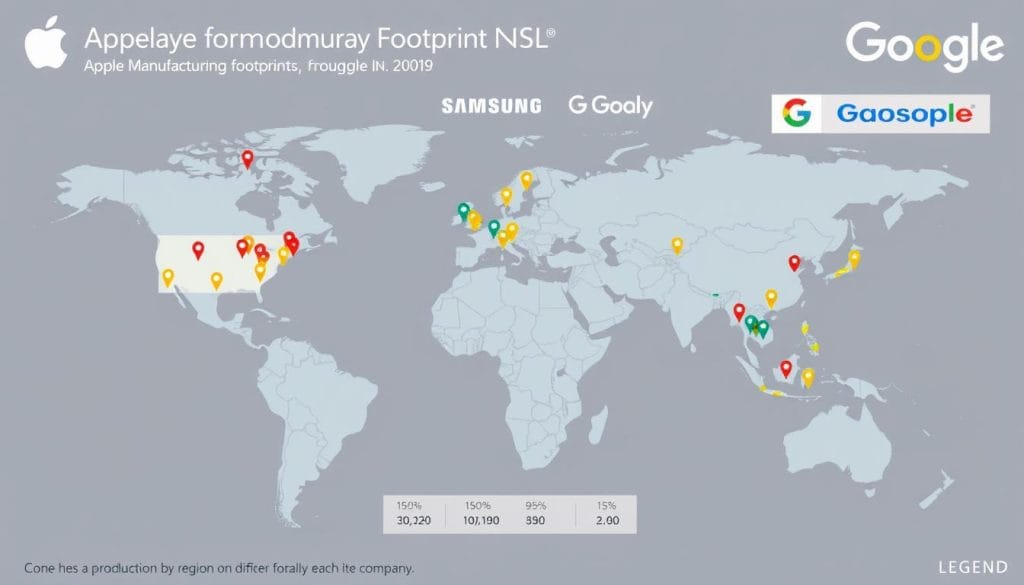
Apple’s approach to reducing China dependency differs significantly from its major competitors. Samsung began diversifying its manufacturing base years earlier, with substantial investments in Vietnam that now account for approximately 60% of its smartphone production. Google has taken a more cautious approach with its Pixel line, maintaining Chinese manufacturing while exploring options in Vietnam on a smaller scale.
| Company | Primary Manufacturing Locations | China Dependency (2025) | Diversification Strategy |
| Apple | China, India, Vietnam | ~70% of iPhone production | Gradual shift with significant investment in India; maintaining China as primary hub while building parallel capabilities |
| Samsung | Vietnam, South Korea, India | Less than 10% of smartphone production | Early and aggressive shift to Vietnam; nearly complete exit from Chinese smartphone manufacturing |
| China, Vietnam | ~75% of Pixel production | Cautious approach with limited Vietnam production; focus on component sourcing diversity |
Apple’s middle-ground approach reflects its unique position. Unlike Samsung, which could leverage its existing semiconductor and display manufacturing expertise in new locations, Apple relies heavily on manufacturing partners like Foxconn. This dependency makes rapid shifts more challenging but also provides flexibility as these partners establish operations in new regions.
Download Our Comprehensive Report
Get our detailed analysis of global tech manufacturing trends, including exclusive data on Apple’s supply chain transformation and its implications for the industry.
Long-Term Benefits and Future Outlook
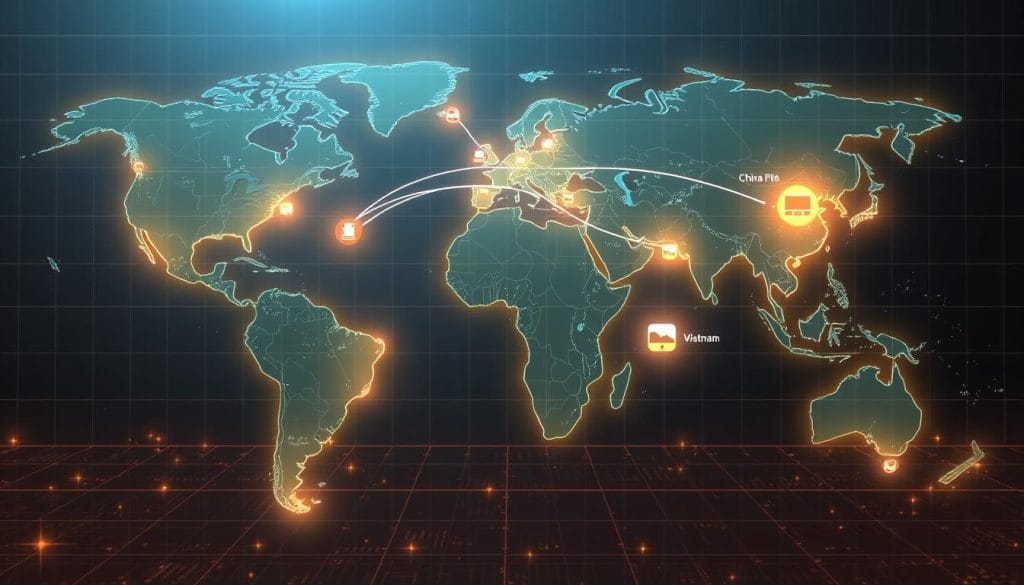
Apple’s strategy to reduce dependency on China while maintaining significant operations there offers several long-term benefits. Geographic diversification provides natural hedges against regional disruptions, whether from geopolitical tensions, natural disasters, or public health crises. The COVID-19 pandemic demonstrated the value of such resilience when Chinese factory shutdowns severely impacted global supply chains.
Benefits of Apple’s Diversification
- Reduced vulnerability to US-China trade tensions
- Enhanced supply chain resilience against regional disruptions
- Access to new talent pools and manufacturing innovations
- Potential tax incentives and market access benefits in India
- Protection against currency fluctuations through geographic spread
Ongoing Challenges
- Higher short-term costs during transition period
- Complexity of managing multiple manufacturing hubs
- Quality consistency across different facilities
- Component supply chain still heavily concentrated in China
- Political pressures from multiple governments with competing interests
Looking ahead, Apple appears committed to a “China plus” strategy rather than a wholesale shift away from its largest manufacturing base. By 2027, the company aims to have roughly equal iPhone production between China and other countries, primarily India. This balanced approach recognizes both the irreplaceable advantages of Chinese manufacturing and the strategic necessity of diversification.
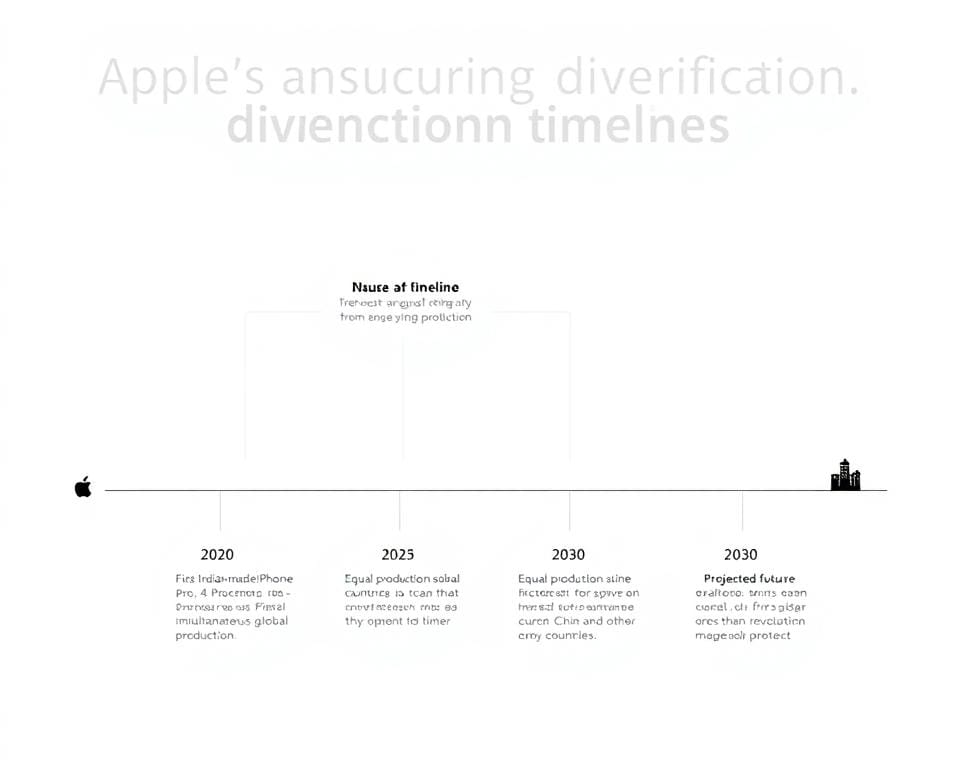
Industry analysts suggest that Apple’s next frontier in diversification may involve more advanced components. While final assembly has begun shifting to India and Vietnam, critical components like advanced chips, displays, and camera modules remain heavily concentrated in East Asia, primarily China, Taiwan, South Korea, and Japan.
The rare earth materials partnership with MP Materials signals Apple’s recognition that true supply chain resilience requires addressing dependencies throughout the entire component ecosystem, not just final assembly. Similar partnerships for other critical materials and components may emerge in the coming years as Apple continues to refine its global manufacturing strategy.
Conclusion: A New Era for Apple Manufacturing
With the iPhone 17 lineup, Apple has crossed a significant threshold in its long-term strategy to create a more resilient, geographically diverse manufacturing ecosystem. The simultaneous production launch in both China and India represents years of careful planning, substantial investment, and strategic partnerships coming to fruition.
While China will remain central to Apple’s manufacturing strategy for the foreseeable future, the company has successfully reduced its vulnerability to disruptions in any single region. This balanced approach reflects the complex reality of global electronics manufacturing, where complete independence from China remains impractical while excessive concentration creates unacceptable risks.
For consumers, Apple’s manufacturing diversification should ultimately translate to more stable product availability and potentially more regional customization. For the technology industry as a whole, Apple’s moves represent a blueprint for navigating the increasingly complex intersection of global commerce, geopolitics, and supply chain management in an uncertain world.
Follow Our Coverage of Apple’s Global Strategy
Join our community of tech industry professionals and enthusiasts to receive regular updates on Apple’s evolving manufacturing strategy and its implications for the global technology ecosystem.
